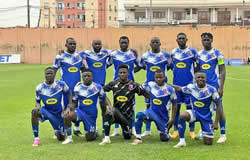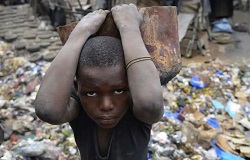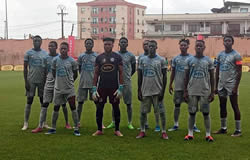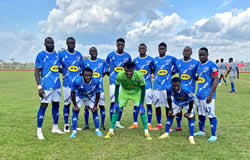Cameroun - Communication. “The New Channels Will Begin Progressively”

Amadou Vamoulke, General Manager, CRTV, talks on the recent restructuring and appointments at Cameroon's public broadcaster.
ADS
What explains the changes that took place in CRTV on Wednesday, September 2, 2015?
You may be aware that there is a new media landscape in the country to which CRTV has to adapt. Henceforth, we are going to run six television channels instead of one. There is great need for content to be produced in terms of quantity needed to feed these channels. We started with a new organistional chart geared towards maximizing conditions for quality and quantity productions. The means have been provided to facilitate production.
So, the appointments are the result of the new organisational chart. We thought that it was time to promote gender and the youth. Some people who are almost unkown to the public have been appointed. These people, in spite of their age, have proven their commitment to serving CRTV. We believe that with these changes, we are ready for the challenges of digital switchover.
How are these new television channels going to operate?
According to the law on the new audio-visual landscape, CRTV is going to have a certain number of responsibilities. We do not only have the responsibility to broadcast CRTV and the five new channels, but also material produced by other content providers (‘editeurs des programmes’). This means that independent television stations in the country no longer have to broadcast their content themselves. Henceforth, once they receive all the agreements from government, they will simply send their content through CRTV equipment for broadcast.
This is done through a technological process known at a certain level as multiplexing and compression. Compression refers to transforming broadcast content into little quantity through multiplexing for it to reach the audience as coming from a particular channel such as Vision 4, CRTV, Canal 2, STV, etc. This technology enables all broadcast content from different channels to be gathered together and aired to be received as coming from the particular channels that sent the material. This is about encoding and decoding broadcast content. This means that CRTV has to do its own work and that of independent channels.
Does this mean that CRTV selects the content of what goes on air?
Whatever the different independent channels want their viewers to watch is determined by them. The law is very strict on this. CRTV doesn’t have the right to change what is sent to it or refuse to broadcast it. What is sent by content providers has to be aired the way it came, provided it received authorisation. If we don’t do that, we risk paying heavy fines that we cannot afford. It should be noted that content providers have to pay for the broadcast of their programmes. I would like to assure the public that there will be no delay in airing the material that is sent to us by independent channels. With technology, they don’t have to personally come to us with their programmes before broadcast. The system allows for automatic transmission of material to us for broadcast without having to move.
What will these new channels be about?
The six channels are CRTV, CRTV News, CRTV Regional, CRTV Sports and CRTV Entertainment. Later, there will be an English language channel. For now, we have a network of about 40 transmitters, but the number will be increased to about 80 or 90 to cover the whole country. All this will take place progressively. The whole process of digital switchover will cost the government FCFA 110 billion. While we operate, we need to make money from our services to enable government pay back the loan that was secured from the Exim Bank of China. The benefits of this system to content providers are much because they no longer need to have their own broadcasting equipment as CRTV will do everything for them.
Does this mean that technicians in independent TV channels might lose their jobs?
This will certainly be the problem.
When are the new channels going operational?
The one that is ready is CRTV News, though it will still take some weeks for it to go operational. For the others, almost nothing has been done, except determining what they are going to do.
Is there no risk that the six new CRTV television channels could end up having overlapping responsibilities?
I doubt if it can happen if I take the example of what goes on elsewhere. The rationale behind this new system is that only one public broadcasting channel cannot satisfy the needs of the different audiences. Splitting up into six different channels ensures that instead of broadcasting – which is airing one message to everybody – we will be doing narrowcasting, which is sending a particular message to a specific audience. There will therefore be no risk of overlapping in responsibilities.
Given that so many positions have been created, is there also no risk that there will be overlapping duties?
You are referring to the behavior of human beings which no one can predict. We have taken measures to ensure that the terms of reference for different positions are clear and precise to avoid overlapping.
It seems like almost everyone was appointed. Who then is going to do the field work?
Both those who were appointed and those who were left out will do the field work. New officials who are journalist-producers have to go to the field from time to time. Before September 2, 2015, we had up to 600 duty positions; but the number has now increased significantly. We have done our homework with the blessing of the Board of Governors. Contributions were received from different officials to make the new system as good as possible. With the help of God, we hope we will be able to satisfy the Cameroonian public by fulfilling our statutory mission through producing enough quality programmes.
ADS
ADS
ADS
ADS









